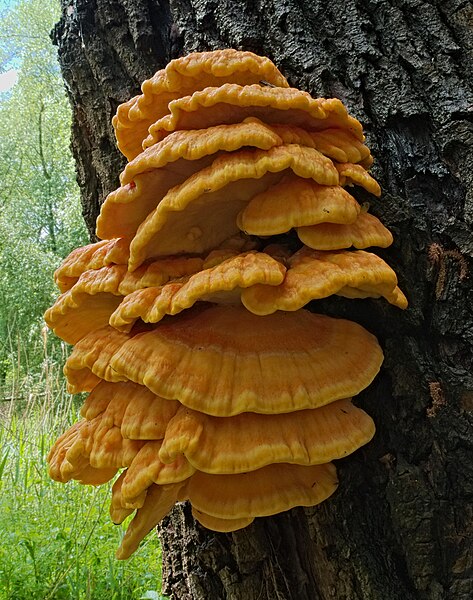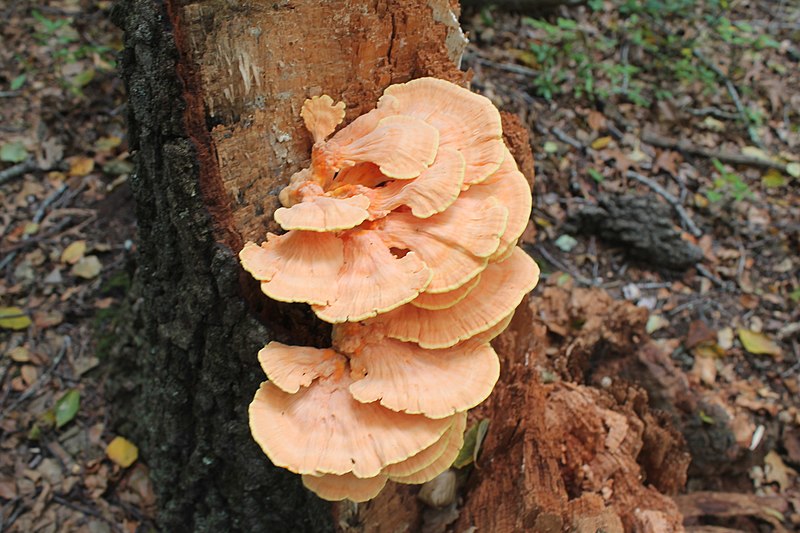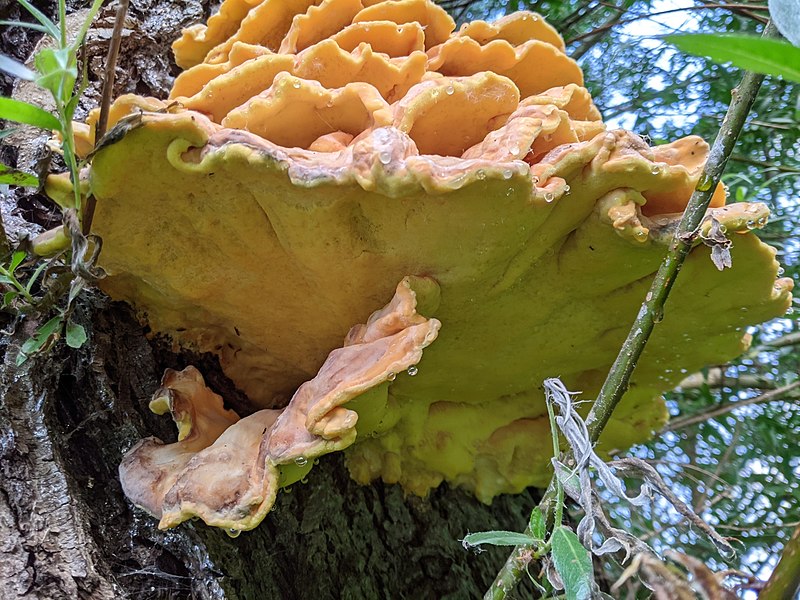Chicken of the Woods Identification – Laetiporus sulphureus
Heads up
Chicken of the Woods, or Laetiporus sulphureus, thrives in both Europe and North America. It’s not your typical ground sprouting mushroom; this fungus prefers the company of trees. Often seen on tree trunks and branches, the Chicken of the Woods is easy to spot due to its golden-yellow shelf-like structures. As it ages, the bright color fades, turning to a milder beige. The underpart of this fungus doesn’t have the usual gills; instead, it showcases tiny tubelike pores.
But why is it called the Chicken of the Woods? It’s not just the appearance; some say the taste of the younger fungi is somewhat like chicken. However, remember not all mushrooms are edible, and this particular one can cause reactions in some individuals.
Chicken of the Woods: Key Parts in Photos



Where to find it
While this fungus can be found across Europe and North America, it’s more common in areas east of the Rockies. It doesn’t just grow on any tree. You’ll often find it on hardwoods, especially on trees like oak, beech and chestnut.
How to identify Chicken of the Woods
When young, the Chicken of the Woods protrudes directly from a tree’s trunk. It starts as a small knob but soon expands, forming fan-shaped shelves, often in a stacked or tiered manner. The vibrant yellow color is unmistakable, making it stand out in its woody surroundings. With age, the color dims to a tan or white. Each shelf varies in size, possibly up to 24 inches across.
When you touch a fresh Chicken of the Woods, you’ll find it juicy and soft, with a noticeable fungal aroma. This juiciness won’t last long as it dries out quickly, becoming brittle.
The Chicken of the Woods has several defining characteristics:
- Caps: The soft, spongy brackets of young fungi have wavy edges with broad margins. As they mature, the edges slim down and become pale. Their colors can range from bright yellow to creamy yellow, often with bands of orange.
- Tubes and Pores: Instead of gills, the underside of this fungus has tiny tubes. These tubes are usually round or oval in shape. The tubes house the pores. These pores, responsible for releasing spores, are white or very light yellow.
- Spores: Spores have an ellipsoidal shape.
- Spore Print: If you’ve ever made a spore print, you’ll know that different mushrooms leave different colored prints. For the Chicken of the Woods, the spore print is white.
- Odor and Taste: This fungus emits a typical mushroomy smell. Its taste is somewhat sour.
Want to learn more?

Disclosure: This post includes affiliate links. If you make a purchase through these links, we may earn a commission at no extra cost to you. We appreciate your support, as it helps keep this website running. Alternatively, you can search for the book title on Amazon if you prefer not to use the links. Thank you for your understanding and support!
